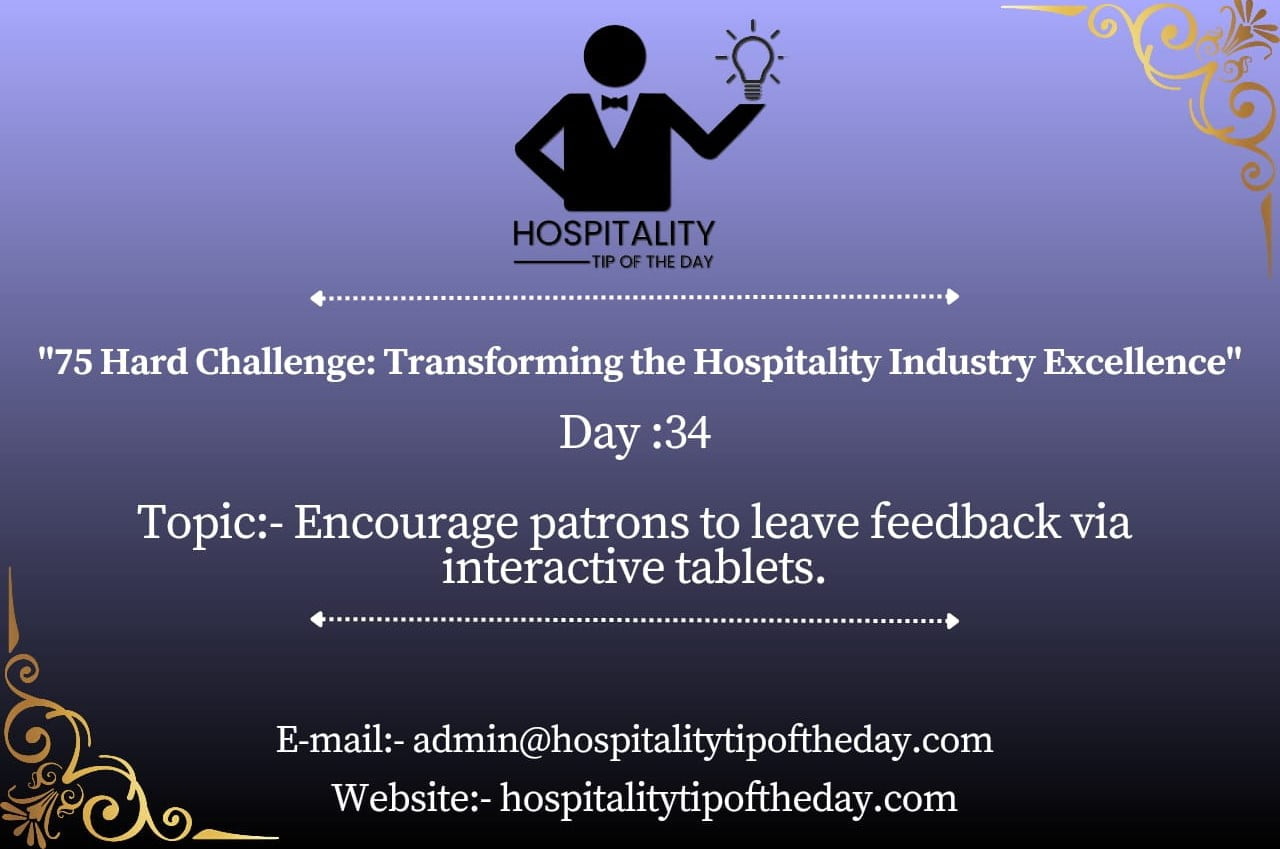
The hospitality industry thrives on providing exceptional experiences to its patrons. In the digital age, feedback from customers plays a crucial role in maintaining and improving the quality of service. One innovative approach that has gained momentum in recent years is encouraging patrons to leave feedback via interactive tablets. This article explores the benefits and best practices associated with this technology in the hospitality industry.
The Shift Towards Interactive Tablets
In the past, leaving feedback often meant filling out paper comment cards or online surveys. While these methods have been effective to some extent, they have their limitations. Interactive tablets, on the other hand, offer a more engaging and convenient way for patrons to share their thoughts.
Benefits of Encouraging Feedback via Interactive Tablets
- Real-time Feedback: Interactive tablets enable guests to provide feedback immediately after their experience, allowing management to address any issues promptly.
- Anonymity: Some guests may hesitate to give honest feedback in person or through traditional methods. Interactive tablets offer a degree of anonymity, encouraging more candid responses.
- User-Friendly: Most patrons are familiar with touchscreen technology, making it easy for them to navigate and provide feedback on tablets.
- Multilingual Options: Tablets can be programmed to support multiple languages, ensuring that language barriers do not hinder feedback collection.
- Data Analytics: Feedback collected through tablets can be analyzed to identify trends, common issues, and areas for improvement.
Best Practices for Implementing Interactive Tablets
- Strategic Placement: Position interactive tablets in strategic locations within the establishment, such as near the entrance, at the end of a meal, or in guest rooms.
- Engaging Interfaces: Design user-friendly interfaces that encourage guests to leave feedback by making the process intuitive and visually appealing.
- Incentives: Consider offering incentives such as discounts, freebies, or loyalty points to encourage patrons to participate.
- Respond Promptly: Acknowledge and act on the feedback received through tablets to demonstrate the commitment to guest satisfaction.
- Regular Updates: Ensure that the software on the tablets is up to date, providing guests with a seamless experience.
Case Studies
Several prominent hospitality establishments have successfully implemented interactive tablets for feedback collection. For example, a luxury hotel in New York City saw a 30% increase in guest participation in feedback surveys after introducing tablets in guest rooms. Similarly, a popular restaurant chain witnessed a 15% increase in positive reviews on social media platforms after placing tablets on dining tables.
Challenges and Considerations
While interactive tablets offer numerous advantages, the hospitality industry must also address potential challenges, including data security, maintenance, and costs associated with implementing and maintaining the technology.
Conclusion
Encouraging patrons to leave feedback via interactive tablets is a powerful tool that the hospitality industry can leverage to enhance guest experiences and continuously improve services. When implemented strategically and with a commitment to acting on the feedback received, interactive tablets can foster better guest satisfaction and loyalty. As technology continues to evolve, the industry should stay on the cutting edge to provide patrons with the best possible experiences.









Pretty nice post. I just stumbled upon your blog and wished to say that I’ve truly enjoyed browsing your blog posts. After all I will be subscribing to your feed and I hope you write again soon!
Earn money online effortlessly. No complex skills required. Interested in easy money? Check this out and begin earning today!
Learn more with this link
https://bit.ly/prepare-to-make-money-fast
I have been reading out many of your posts and i can state clever stuff. I will surely bookmark your site.